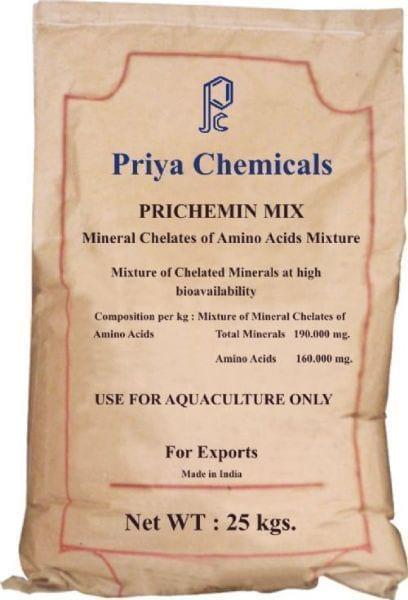Immune stimulation in aquaculture was a subject on the board when I joined Phileo some years ago. One of my first tasks was to assess the products we had available in the group as immune stimulants in aquaculture species.
Immune stimulation in aquaculture is a confused field
Not being an immunologist by training, but having some knowledge in the field of immune stimulation in aquaculture, I then embarked on a journey searching scientific works that had been done on the subject to find the best laboratories and best models (animals and parameters) to enable me to draft protocols to screen our products. I have found, and was still finding, the task daunting until I recently stumbled upon the article of Hauton and colleagues (2015): Future prospects for prophylactic immune stimulation in crustacean aquaculture the need for improved metadata to address immune system complexity, which helped me compile my thoughts on this complex subject.
There are numerous reviews on the subject of enhancement of immune performance in aquaculture, most of them of a good level, but they often highlight discrepancies between research groups and models rather than identifying what is an efficient product. Most of the conclusions are that more work is needed. I do not think that more work is needed, but more controlled and focused work is definitely lacking. My observations on the evaluation of trials of immune stimulants in aquatic species were the same as the authors i.e. it is very difficult to compare and replicate the works of different research groups because of some of these reasons:
- Very large variety of species tested in fish (fresh and sea water) and crustacean;
- Very large variety of life stages, not necessarily representative of key stages in farms;
- Large variety of pathogens used, whose optimal dose was not always evaluated by LC/LD50;
- No consistency in terms of dosages, mode of administration (injection, oral, immersion);
- No indication of feed intake, dose of ingested products (somehow difficult to evaluate when the products is given orally);
- No consistency in terms of duration of treatment;
- High variability between individuals in aquatic species, so the protocols in terms of replication and statistic test should be robust.
So as you can see, immune stimulation in aquaculture is definetly not a simple process to implement.
Work that I have completed in Phileo, and previous companies, showed me the high importance of the animals used, and particularly their health status, origin and strain. This information is generally lacking. We all understand that laboratories are not always independent, often not having their own breeding facilities, and they rely on hatcheries or farms that are in the vicinity of their institutes. However, animals could already have been vaccinated, exposed to various pathogens, and the strains are not always adapted to the work to be performed, making the response unreliable. For example, at some point, in Thailand, it was difficult to do Taura Syndrome Virus challenges in shrimp because the strains available locally were TSV resistant and the researchers had then to go back to use the original Kona strain. For more replicable work, the same origin and strain should be used.`
Another important point very often missing in the published work, and which is crucial if the research community wants to progress to improve immune status of aquatic animals, is the description (physically and biochemically) of products. Working with products derived from yeast, I was more focused in studying works involving them, and most of the time, extraction methods, percentages of mannans, beta-glucans (powerful immunestimulants), proteins and the composition of nucleotides were not provided, making it difficult to understand the mode of action and optimum dosages, for example. We understand that companies are not willing to disclose company secrets and know how, but minimum information should be indicated. Numerous works are done with independent laboratories and they should go the extra mile to make their studies more comprehensive.
Applied Research or fundamental research
A high volume of work published is often at the border of applied research and fundamental research, bringing few conclusions one way or the other. A broad spectrum of immune parameters is often evaluated such as hematocrit, respiratory burst, some enzymes, phagocytosis activity and gene expression, and they are somehow difficult to correlate to each other. If a bacterial challenge is performed as well, they are also difficult to correlate to the challenges, especially in fish. This results in more questions than answers. Researchers should not fall into the trap of more parameters are better but should remain focused on key parameters – superoxidismutase is sometimes looked into but it is not a direct immune parameter, for example.
Nevertheless, very interesting progress has been recently accomplished in immunology in fish and shrimp on the description of Toll Like receptors, immune molecules, or immune pathways, giving more tools to evaluate potential immune enhancers. Fundamental research in aquatic species immunology is necessary, and is advancing, but a large part of this field remains relatively unknown. Furthermore, some of this fundamental work is not being transferred to the field at the moment. Very interesting work has been done, for example, by injecting beta glucans, but such a technique proves to be very difficult to apply in fish ponds.
Where to go
We all agree that given the state of aquaculture at the moment, and the high prevalence of diseases, immune stimulation in aquaculture environnements can be an efficient management tool for improving the health status in fish and shrimp. It seems also that the best way to administer stimulants is directly through feeds, or in some cases at farm level top dressed on feeds. There is a need to provide more efficient, more specialized immune stimulants to specific pathogens, specific life stages, with accurate duration of treatments. This can only be optimized through better research.
It could be possible to transfer some models already developed and understood in mammals and birds, but responses are very different between these animals and fish and shrimp, so the industry needs to develop its own models to better understand the mode of actions of tested products, and to provide tools that can be applied directly in the aqua field. Fundamental research will be greatly helped with the development of immune cell lines, for example. That proves difficult to develop in shrimp, but the existence of insect cell lines is a good indicator that it could be done in the future. Then, specific and simple models have to be developed to perform applied research, maybe with only disease challenges. This should be done with models replicable in different laboratories, with animals of same origin and strain, same life stages, and definite pathogens. Hauton et al have proposed a Minimum Information required to support a Stimulant Assessment experiment- MISA guideline, which is a first step in the direction of better evaluation of immune stimulants. Some laboratories have already developed similar procedures and these guidelines should be considered by our whole industry.














